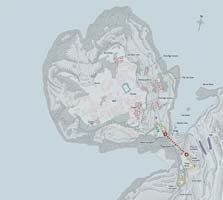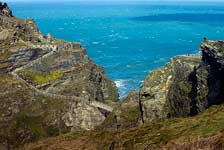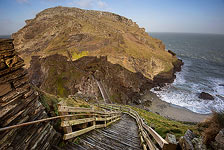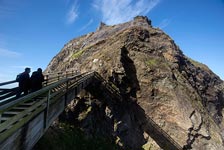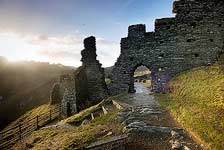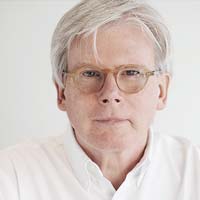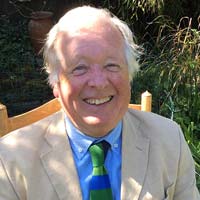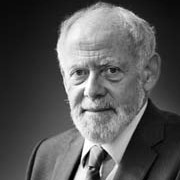Concept
Tintagel Castle’s thirteenth-century ruins, set among sea-bitten precipices, distinguish one of the most spectacular historic sites in Britain.
A place of elemental power and beauty, Tintagel is an outstanding example of a man-made monument interacting with a natural feature. Tintagel’s natural land-bridge, a slender isthmus linking the headland (also known as Island) to the mainland, has been its defining feature for 5,000 years. The Cornish name Din Tagell, means literally, the Fortress of the Narrow Entrance. This physical connection – a tenuous rocky link much-eroded over the centuries – is the source of its traditions and astonishing cultural resonance.
Prized throughout history, Tintagel is thought to have been the seat of the region’s Dark-Age rulers and developed unique links with the Byzantine world during the fifth to seventh centuries. It achieved international fame in the twelfth century when Geoffrey of Monmouth’s History of the Kings of Britain described it as the place of the legendary King Arthur’s conception.
This, along with its appearance in the stories of Tristan and Yseult, may have inspired the construction of Tintagel’s romantically situated castle by King Henry III’s brother, Richard, Earl of Cornwall in the 1230s. Tintagel reoccurs in the western literary canon in the nineteenth and twentieth centuries, when both Tennyson and Hardy published work inspired by its setting.
English Heritage, the guardian of this scheduled ancient monument, is now searching for a dedicated and talented architectural and engineering team to design a twenty-first century connection, a clifftop footbridge.
Twenty-eight metres higher than the current crossing and 72m in span, the bridge will open up exhilarating views of the Island, coastline and Atlantic seascape as it traces the path – now lost through collapse and erosion – of the original land-link. It is expected to transform the visitor experience.
The new structure, the focus of this design competition, should exemplify design at its most assured. English Heritage envisages an elegant, even structurally daring, concept, which is beautiful in its own right and sensitively balanced with the landscape and exceptional surroundings – the site lying within an Area of Outstanding Natural Beauty.
The competition consisted of two stages. At the first stage, expressions of interest were sought, then, at the second stage, six shortlisted teams were asked to conceptualise a design, which incorporated a construction methodology, in order to mitigate the challenging environment and access constraints. The designs they produced can be viewed here. The winner, Ney & Partners, was announced in March 2016.
